Tomomichi Nakamura — winner of the 2019 (42nd) New Cosmos of Photography Grand Prize —
created his award-winning work “Like Ants” after the death of his father. Nakamura,
who has received high praise for his expressive activities primarily in animation,
called this work “a video work that does not move, formed using still images”.
Photographer Rineke Dijkstra, the judge who selected his work,
praised the way Nakamura beautifully expresses his emotions
“which are complex, oppressive, and melancholic at the same time”.
For this year's solo exhibition, he presented “Ants”, which adds new works to his series.
We spoke to him about his creative intentions and his thoughts on expression.
I've been fond of living things since I was a kid, and ants were very familiar to me because I could spot them as soon as I stepped outside my house. I often used to watch them almost in a daze all day long. Ants have always intrigued me because their social nature is similar to that of humans. But at the same time they are very small and weak creatures that you may have stepped on without knowing it. I, too, am in a weak position in society, and other people may actually be in the same position if you look at each of them individually. This work is, in its way, a self-portrait created by superimposing these weak ants on myself.
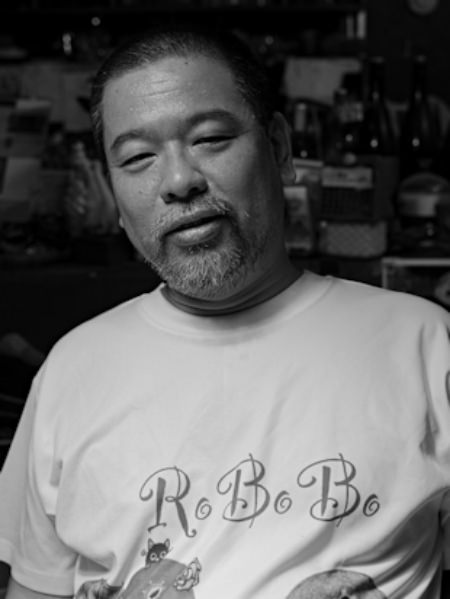
To tell the truth, my physical condition deteriorated about a year before I entered my work in the New Cosmos of Photography. After my father passed away following a four-year battle with illness, I became severely depressed and I suffered from a number of physical illnesses as well, including liver dysfunction. It became virtually impossible for me, both physically and mentally, to work in the way I had been working before. So I took up photography because I wanted to continue creating in one form or another.
That human figure was modeled after myself. I didn't use CG, but rather layered many photographic images of ants on a single screen. The original method comes from animation in which multiple images called cels are superimposed over a background. I repurposed that method for this work. I took tons of photos of ants and overlapped them like cels and then erased the parts I didn't want. The final superimposed image consists of several hundred layers. By forming an image with countless ants in this way, I wanted to express the sensation that I was disappearing into thin air like smoke.

The chairs in the photo are for myself and my partner (or maybe for the viewer and someone else). I positioned the photo as a pathway between me and the entire world.
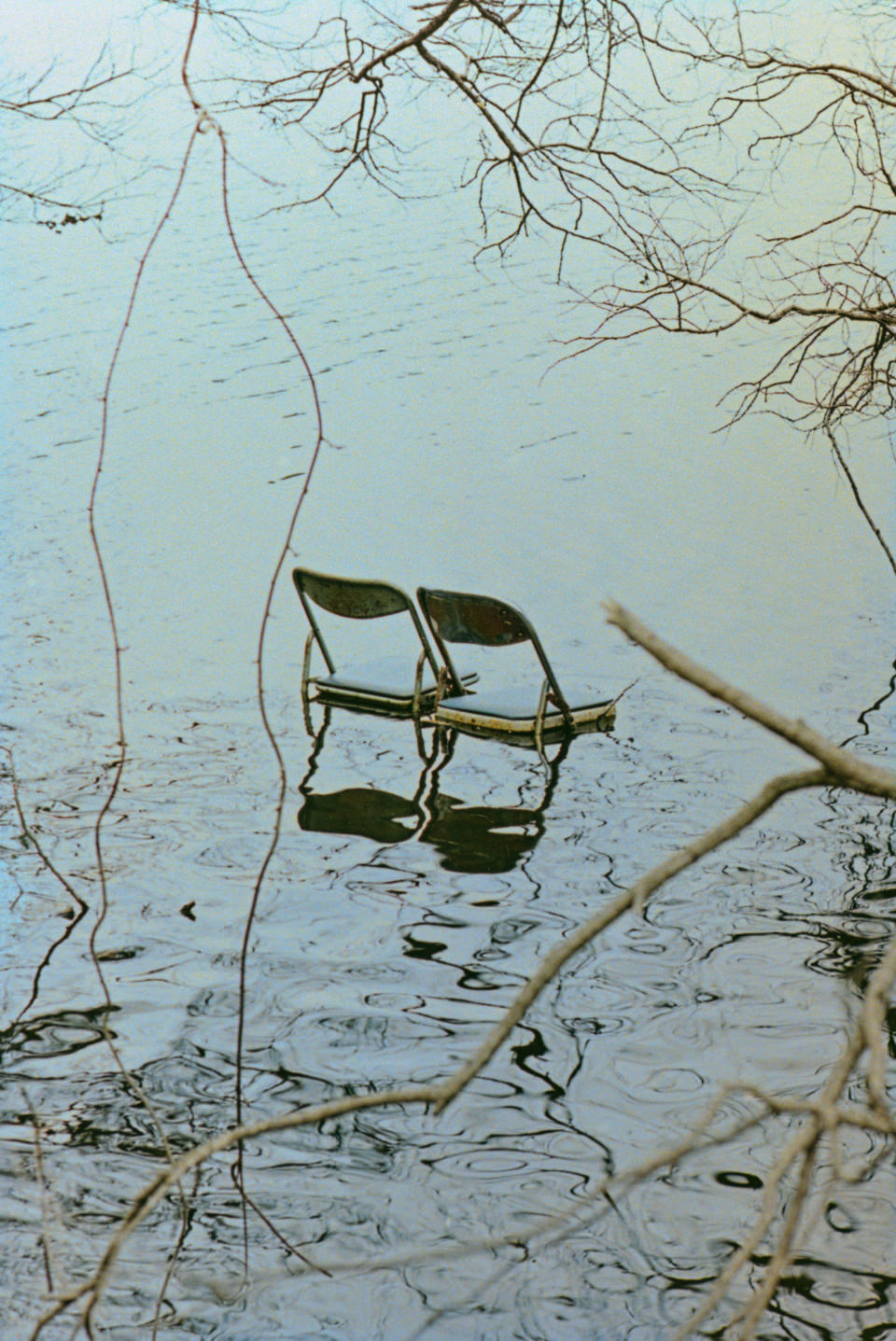

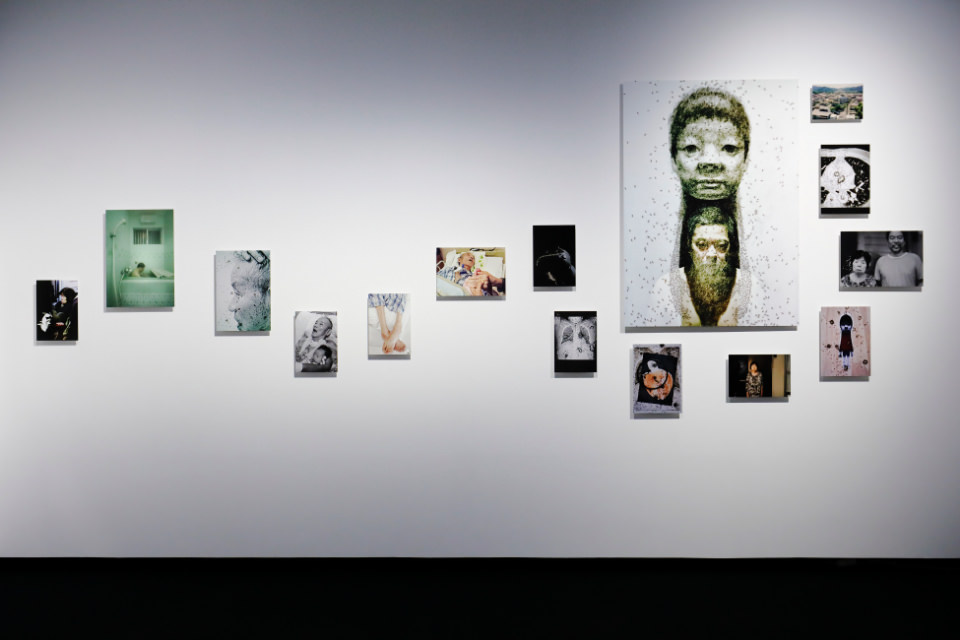
That's right. She's the closest person to me. People other than my girlfriend who are close to me and family members also appear in the area of the exhibit that focuses on her. But they are just fragments of my life, as well as being fragments of my girlfriend's life. On the walls facing each other, I placed images centered on myself. The wall that connects the two includes a photo I took of my late father, but most of the people who appear on that wall are actually strangers who I only met to help create this work.
I wanted to show that even absolute strangers have their own life fragments, just like me. There are people who are important to me, and there are countless other people and together they make up our society. It's the same for everyone. That's why it's okay for the people in my work to be people I've never met before, and I rather liked it.
It represents the childlike side of myself.
I'll go through the steps in my creative process with you. I first drew a picture with the psychological and spiritual parts, which are the core of the piece, and then I took a photo of the picture with a film camera. Next, I took photos of myself at multiple exposures and layered them on top of the original photo to create the first image. I developed the photo and made a print. I lured ants to climb onto the print and started shooting once they had gathered. I took several hundred pictures of them. From there, I erased the parts I didn't want, just like the image I submitted for last year's competition. By adding layers like this, I was able to express myself and my inner self.
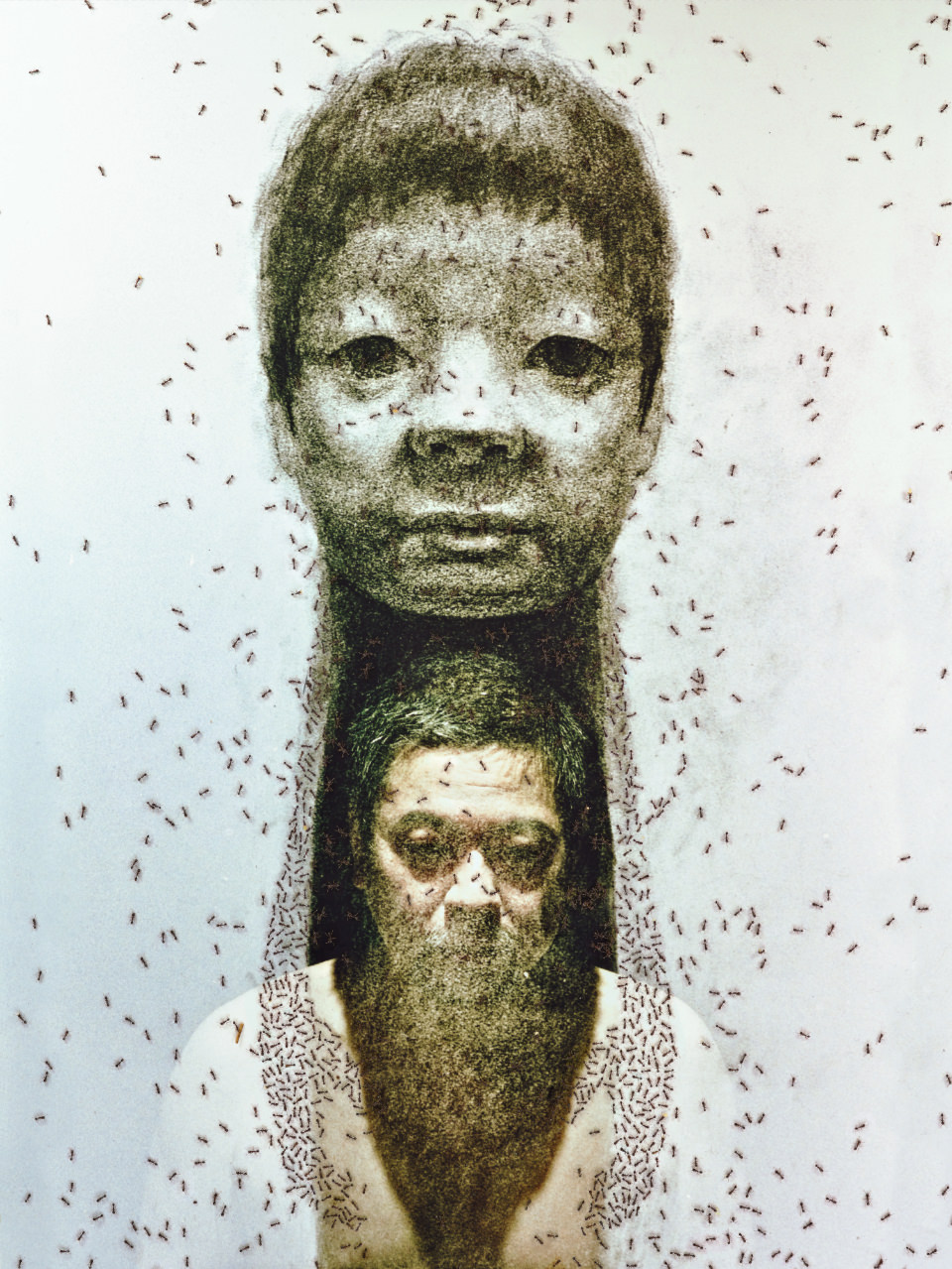
I guess I wanted to show myself feeling helpless and wary of the world. In contrast, the hand in the image of my partner on the opposite side is open.
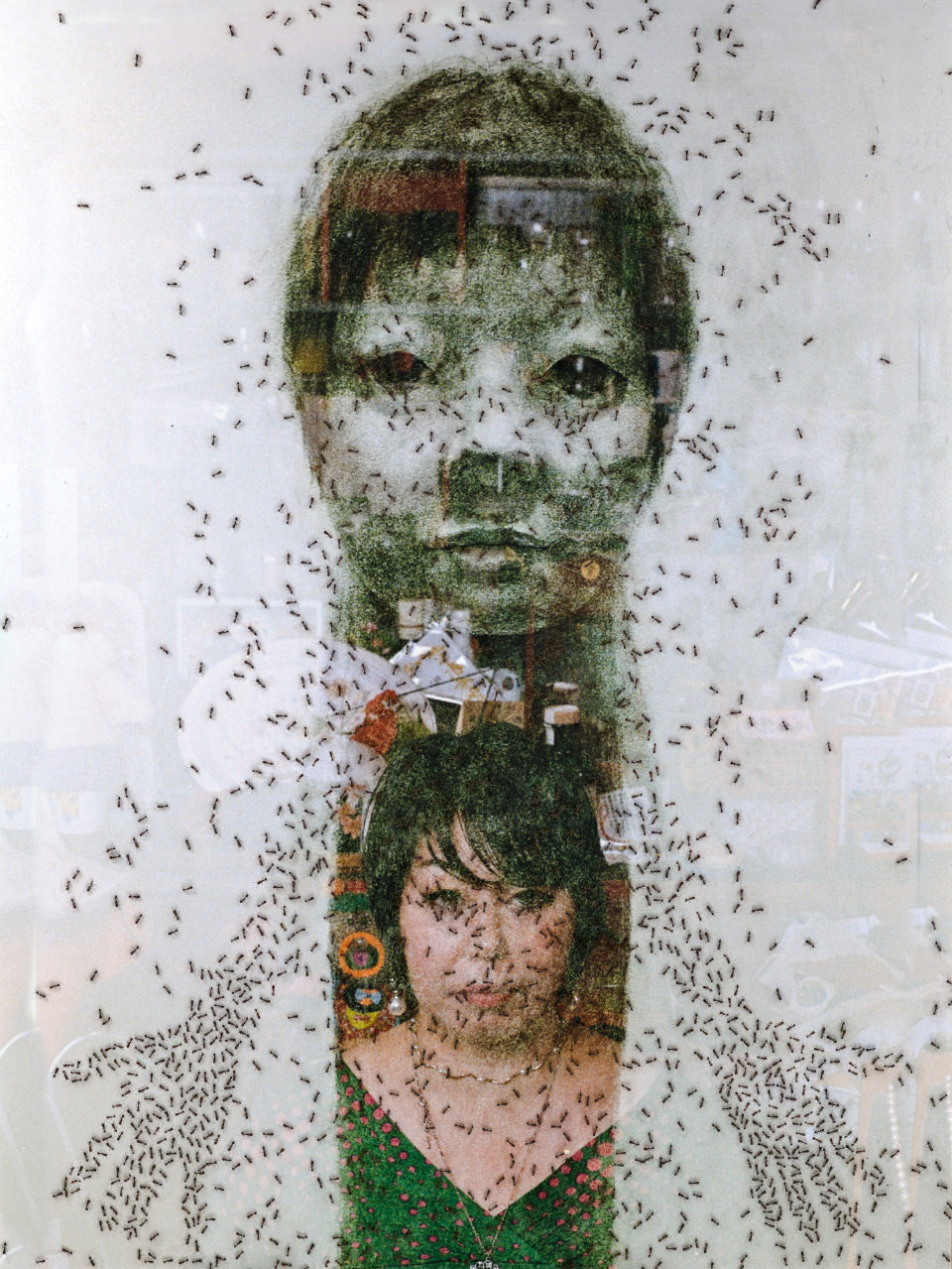
For the video, I took negatives taken with a film camera and photographed them again with a digital camera. Then I incorporated the digital images into the video work.
I have been making video works for the longest time, but after receiving the New Cosmos of Photography Grand Prize last year, I started to think about the characteristics of the photographic medium and I got interested in the production process using film. The process of developing negatives and printing them dovetails in many ways with how I think.
My interest lies in layering, in building up hierarchies. I fundamentally believe that when you penetrate down to the very depths of the world's hierarchies, all meaning disappears. So I think adding layers to hide this core enrichens your expressions.
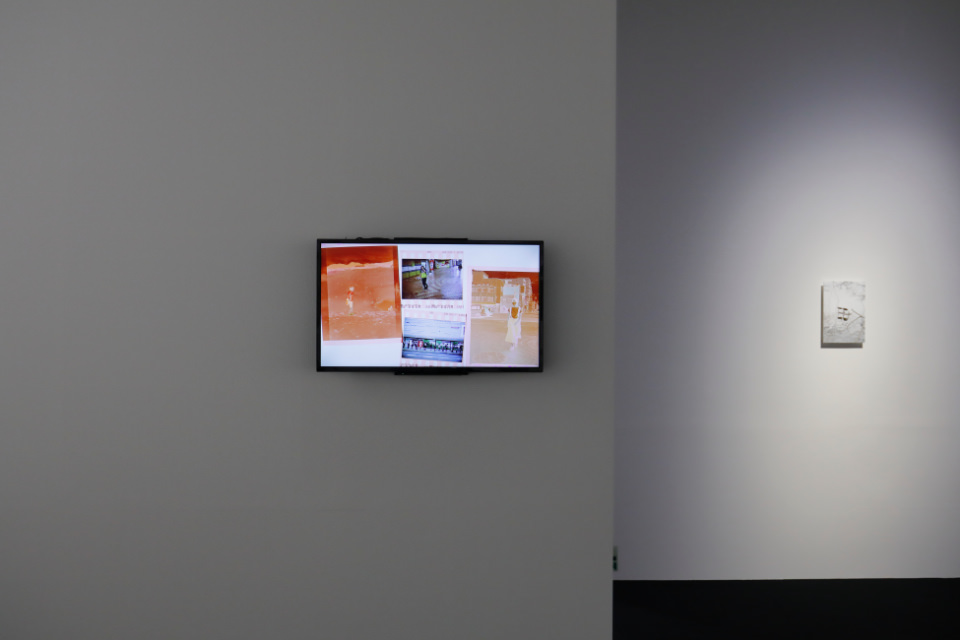
Whenever I'm asked this, I always answer that, for me, expression is a means of escape. As with the world, I couldn't find any value when I descended deep within myself and probed the core of my being. But when I escaped from the place where I couldn't find any value, the place I drifted to where I did find self-worth was expression. I recognize this may sound like very negative thing to say. But if herbivores were to lose their ability to run away, they would all be eaten. So I believe that escaping is also a struggle for existence.
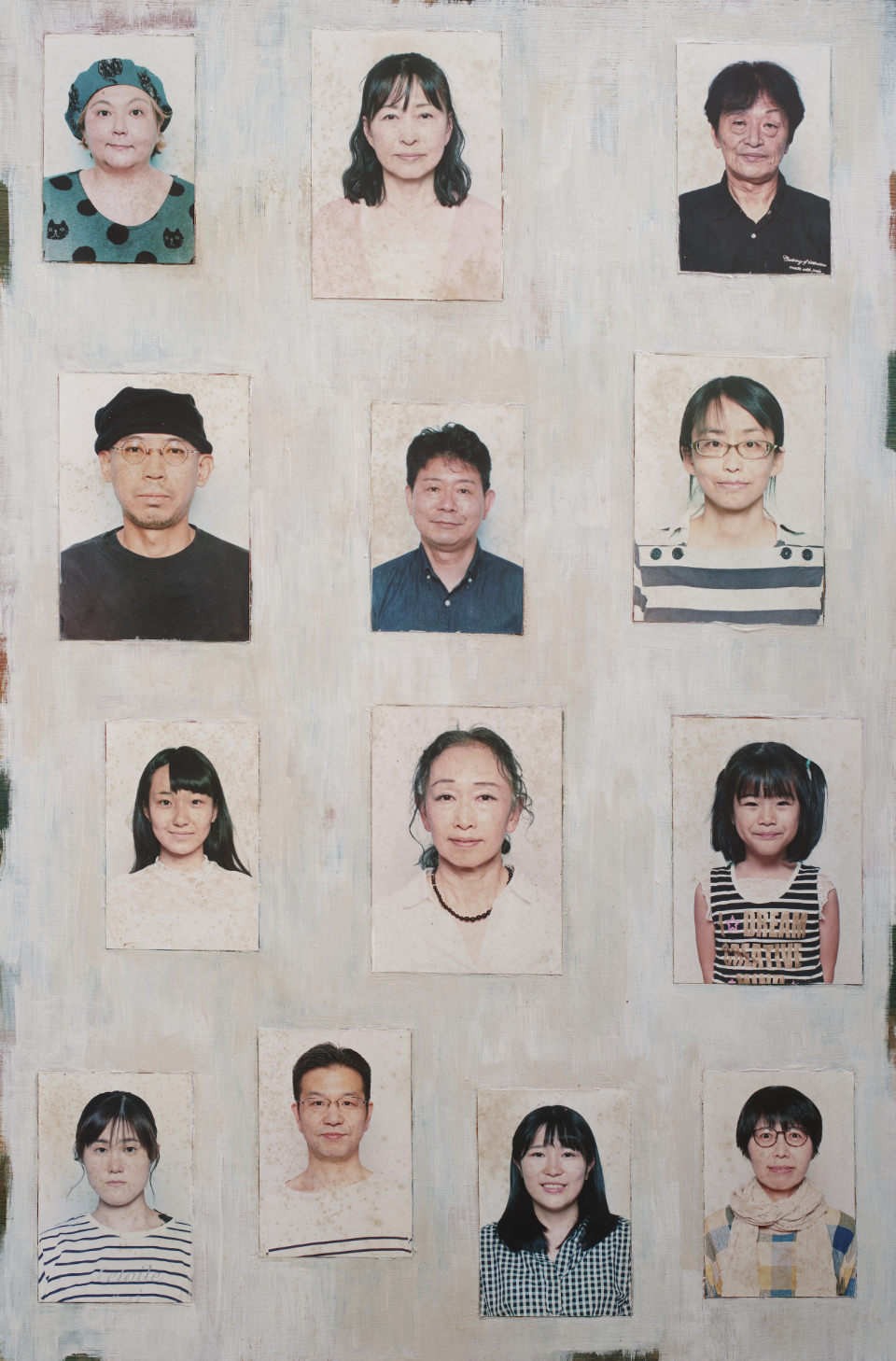
I've been thinking a lot about the idea of escape. The world cannot go on without competition between the abilities of escape and pursuit. It's only because of social conventions that we have to use the word “win” on occasions. Some people say they had no choice but to escape and come this way, but perhaps the real motivation is the fear of their own demise.
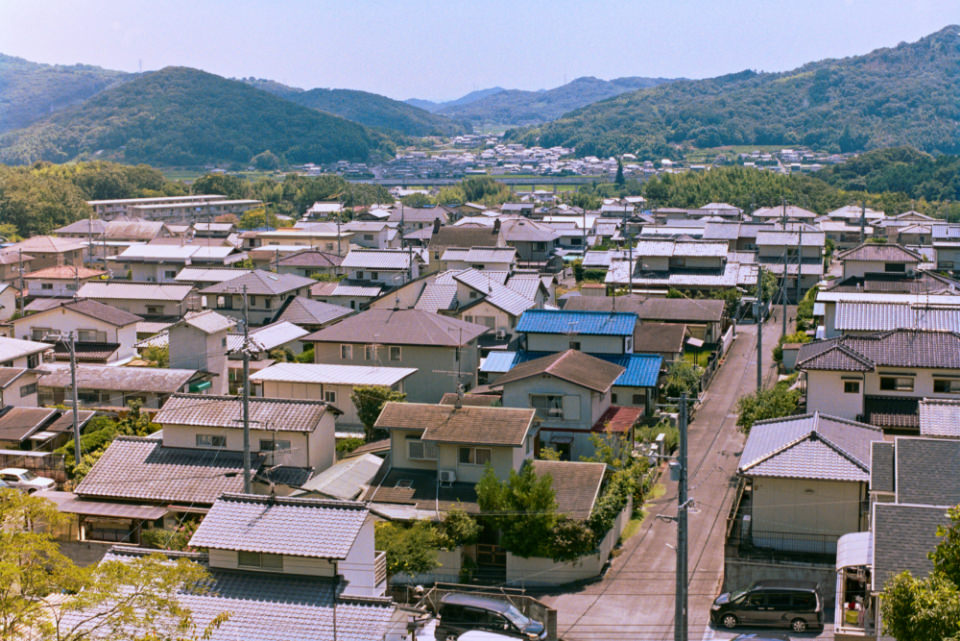
I also have no idea where we are going. I do think we will go somewhere. First off, it was strange that I made this work without any distinct goal in mind. I made it with the feeling that there must be a goal at our destination somewhere.
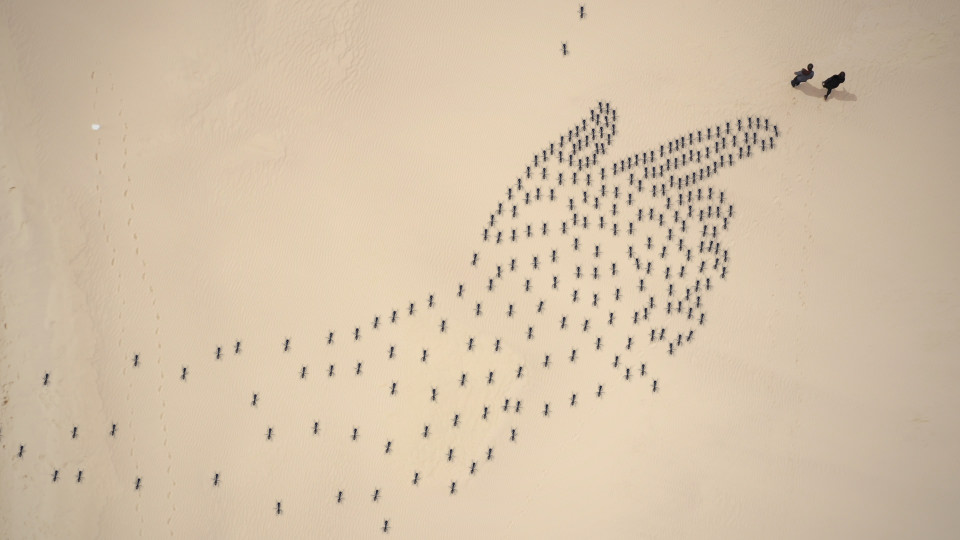
| 1972 | Born in Okayama |
| 2007 | The work Boku no machi [My Town] received honorable mention at the Image Forum Festival and an official invitation to the Vancouver International Film Festival. |
| 2009 | The work Ari [Ants] was screened at the International Short Film Festival Oberhausen and at international competitions at the Centre Pompidou, the Museo Reina Sofía, and other prestigious venues. |
| 2015 | The work Tenshi modoki [Mock Angel] was screened at the Tampere Film Festival and won a semi-finalist award at the Okayama Arts and Culture Awards. |
| 2017 | Received honorable mention at the Fukutake Cultural Awards. |
Has also received numerous other awards and screenings at home and abroad